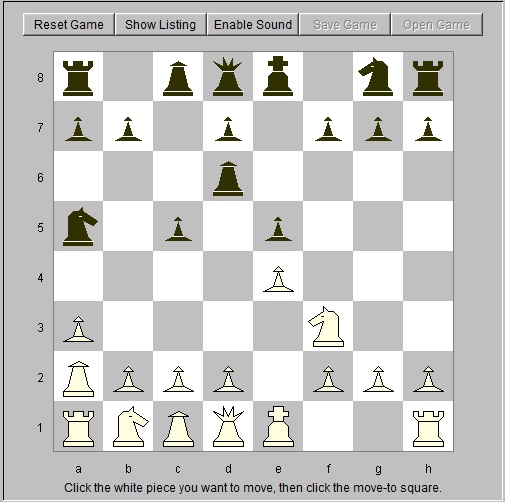
Position after move 5.
White Black 1. e4 e5 2. Nf3 Nc6 3. Bc4 Bd6 The point of black's bishop move is to free the knight to attack the bishop at c4. 4. a3 Na5 White wants to keep the bishop on the line to f7 so he makes a hidey hole. 5. Ba2 c5 The c5 move makes black's bishop chasing less pointless.

6. c3 Rb8 7. d4 e5xd4 8. cxd4 Nc6 9. O-O cxd4 10. Nxd4 Qc7 Black has moved his queen's knight three times and has an isolated pawn on a half open file.
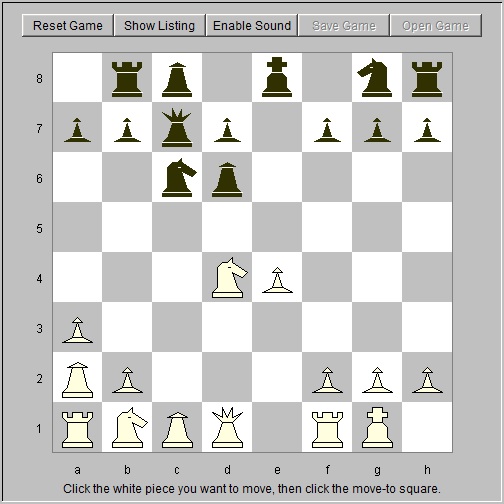
11. h3 Ng8e7 12. Nc3 a6 13. Nd5 Nxd5 14. exd5 Nxd4 15. Qxd4 O-O A symmetrical pawn position with equal development.
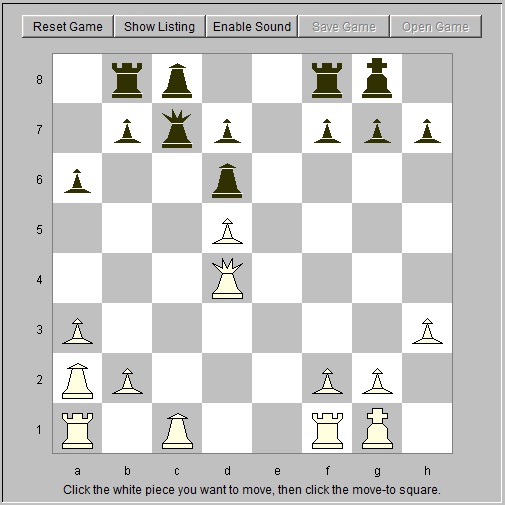
16. Qh4 b5 17. Bb1 f5 18. Be3 Bb7 19. Ba2 Qc2 20. Bd4 Qe4 Black poses an unavoidable queen exchange.
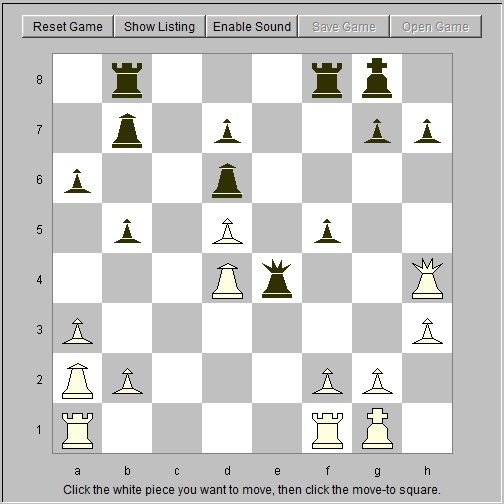
21. Qxe4 fxe4 22. Rf1e1 Rb8e8 23. Ra1d1 Kh8 24. b4 Bf4 25. Be3 Bd6 White needs to create some initiative.
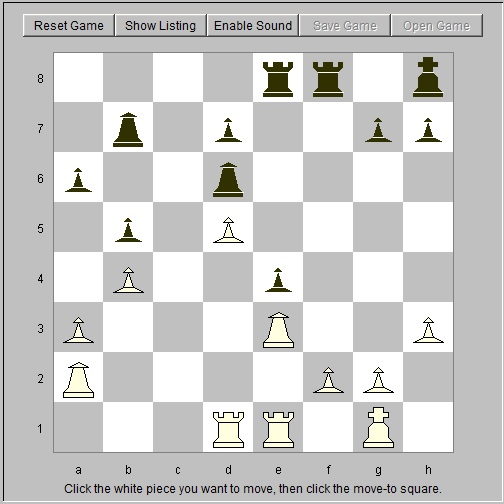
26. Rc1 Rf5 27. Re1d1 Kg8? White's rooks are now better placed. Black's king move is a mistake. Better to get luft! 28. Bc5 Bxc5? 29. bxc5 e3 Black's taking of the bishop allowed white's pawn phalanx in the center. 30. fxe3 Rxe3

31. c6 Bc8 32. d6+ Kh8 An all-imporant tempo. 33. cxd7 Bxd7 34. Rc7 Rxa3 35. Rxd7 Rf8 White wins a piece due to black's lack of luft!
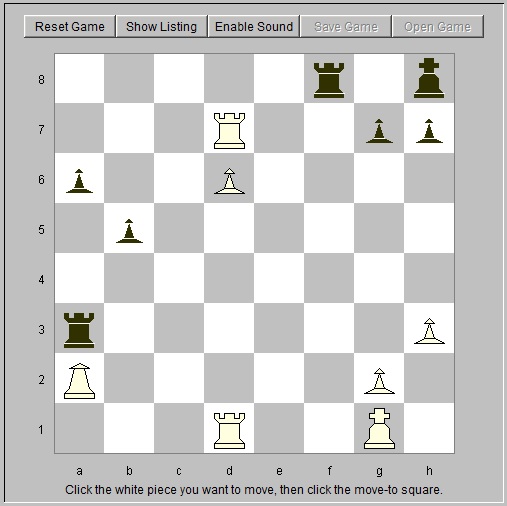
36. Re7 Rxa2 I could have saved the bishop, but don't need to. 37. d7 b4 38. d8=Q Ra2f2 It's effectively all over now, just the mopping up is left. 39. Re8 Kg8 40. Qd5+ Kh8
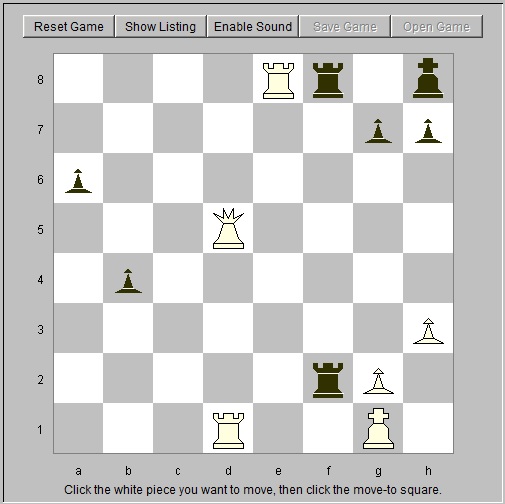
41. Qa8 Kg8 42. Rxf8+ Rxf8 43. Qxa6 Rb8 44. Qc4+ Kh8 45. Qxb4 Rc8
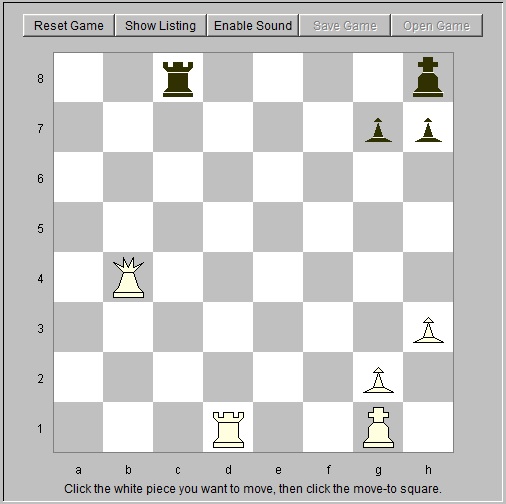
46. Qb7 Rg8 47. Qf7 Ra8 48. Rd7 Rg8 49. h4 Black resigns
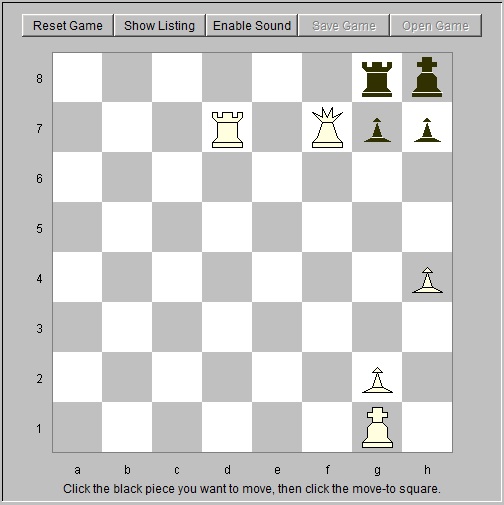
White Black 1. e4 e5 Double king pawn opening. 2. Nf3 Nc6 Standard attack and defense. 3. Bc4 Nf6 The two knights defense. 4. Ng5 d5 The Steinitz attack! 5. exd5 Nxd5 Nxd5 is generally considered insufficient and this game illustrates why.
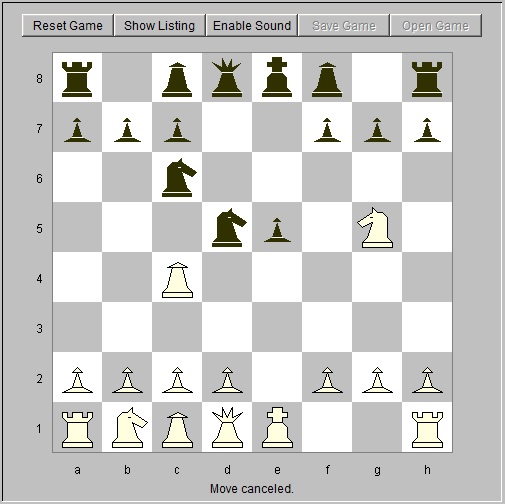
6. d4! Nxd4 On the surface, d4 seems to lose a pawn, but that's not the case, 7. c3 h6 6. Nxf7 is the Fried Liver Attack, also unpleasant for black. See the next game for 7. ... f6. 8. Nxf7 Kxf7 Moving the knight to a safe square also let's black's knight off the hook. 9. cxd4 b5 10. Bb3 Ke6 Taking the offered pawn is also feasible, but the text move is faster.
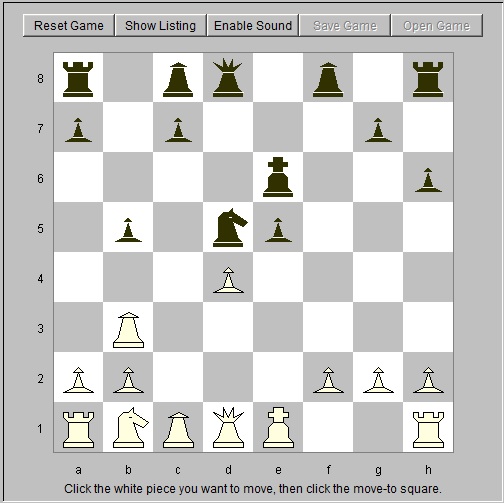
11. O-O c6 12. dxe5 Kxe5 13. Re1+ Kd6 14. Bf4+ Kc5 15. Re5 b4 Black keeps the knight confined. There really are no good moves for black here.
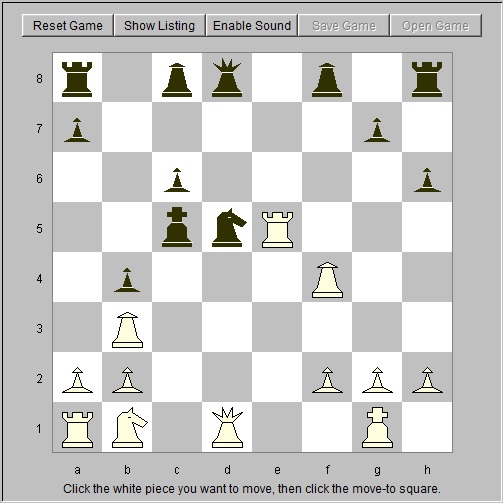
16. Be3+ Kd6 17. Rxd5+ cxd5 18. Qxd5+ Kc7 19. Qxa8 Qd7 20. Qxa7+ Bb7

21. Nd2 Qc6 Black has a mating threat! 22. Nf3 Qe4 23. Rc1+ Kd7 24. Ne5+ Qxe5 25. Qxb7+ Qc7 Checkmate is inevitable.
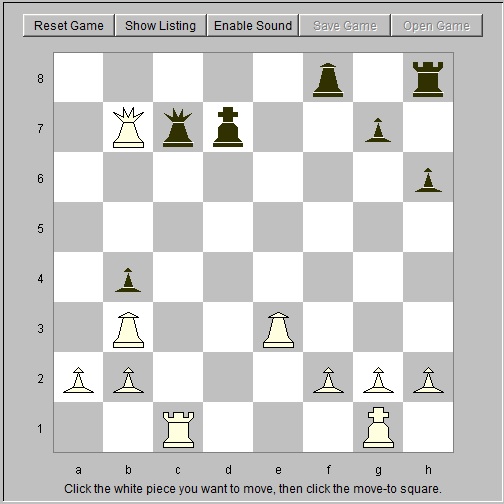
26. Rxc7+ Black resigns
White Black 1. e4 e5 2. Nf3 Nc6 3. Bc4 Nf6 4. Ng5 d5 5. exd5 Nxd5

6. d4! Nxd4 Yes, d4 again gets an exclamation mark, as in Horrowitz's Chess Openings. 7. c3 f6 At first glance, f6 looks stronger than h6 as played above, but it's not. 8. cxd4 fxg5 9. dxe5 Bb4+ 10. Nd2 Nb6

11. Bb3 Qe7 12. O-O g4 13. a3 Ba5 14. Nc4 Nxc4 15. Bxc4 Qxe5
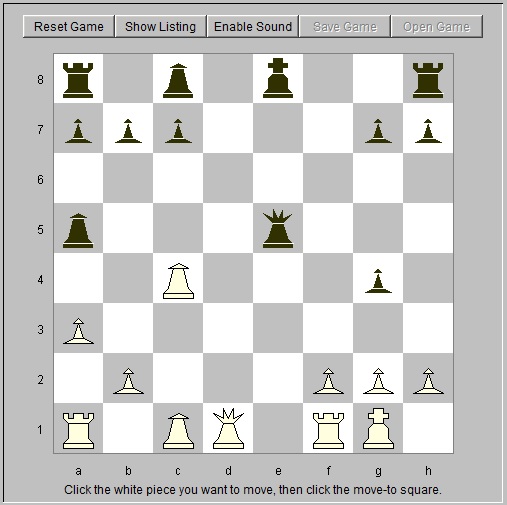
16. b4 Bxb4 17. axb4 Qxa1 The point of black's audacity in snatching the pawn at e4. 18. Re1+ Be6 My point in letting him. 19. Rxe6+ Kf8 20. Qd2 Rc8 Black has nothing better.
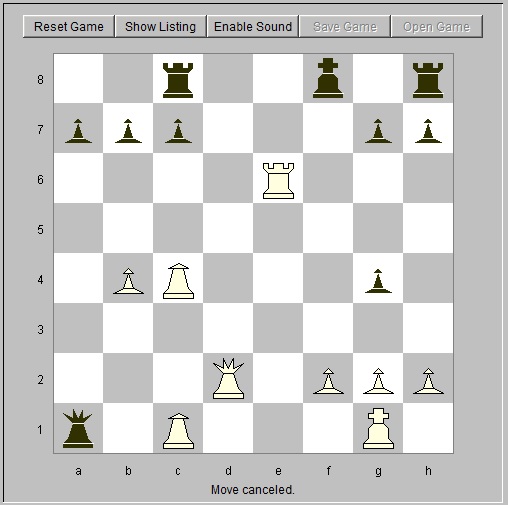
21. Qf4+ Qf6 22. Rxf6+ gxf6 23. Qxf6+ Black resigns
 Email Richard dot J dot Wagner at gmail dot com
Email Richard dot J dot Wagner at gmail dot com
Chess.html, this hand crafted HTML file was created January 3, 2018.
Last updated January 16, 2018 by
Dr. Rick Wagner. Copyright © 2018, all rights reserved.